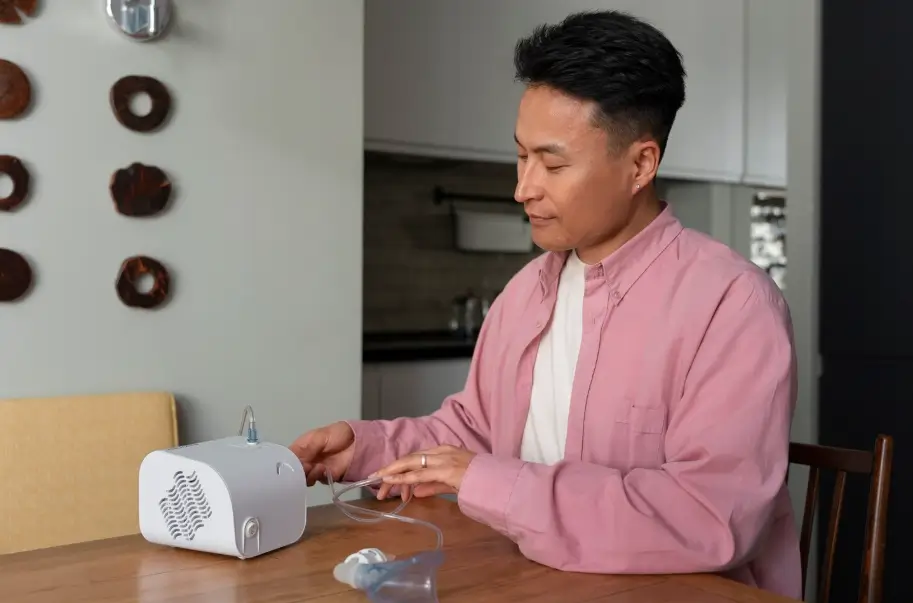Respiratory health is crucial for everyone, especially for patients with lung diseases, sleep disorders, or chronic respiratory conditions. In Pakistan, the demand for home-based respiratory machines is growing as people prefer safe, convenient, and reliable healthcare at home.
Understanding what respiratory machines are, how they work, and which devices are suitable for home use is essential for patients, caregivers, and family members. This guide provides a clear overview for beginners and home users.
What Are Respiratory Machines?
Respiratory machines are medical devices that assist or monitor breathing. They can be used in hospitals or at home, depending on the patient’s condition. These devices help in:
- Ensuring proper airflow during sleep
- Delivering supplemental oxygen
- Supporting breathing during emergencies
- Monitoring oxygen levels and heart rate
Home users in Pakistan now have access to advanced respiratory machines that were once limited to hospitals, making respiratory care more convenient and affordable.
Types of Respiratory Machines for Home Use
1. CPAP Machines (Continuous Positive Airway Pressure)
- Purpose: Treats obstructive sleep apnea (OSA) by keeping airways open.
- How It Works: Delivers continuous pressurized air through a mask during sleep.
- Benefits for Home Users: Improves sleep quality, reduces snoring, and prevents low oxygen levels.
- Popular Models in Pakistan: ResMed AirSense 10, Philips DreamStation CPAP.
2. BiPAP Machines (Bilevel Positive Airway Pressure)
- Purpose: Ideal for patients who need different pressures during inhalation and exhalation.
- How It Works: Provides two levels of air pressure, offering more comfort for patients with COPD or severe sleep apnea.
- Home Use Tips: Ensure proper mask fit and regular cleaning to prevent infections.
3. APAP Machines (Automatic Positive Airway Pressure)
- Purpose: Automatically adjusts air pressure based on breathing patterns.
- Best For: Patients with varying severity of sleep apnea.
- Home Advantage: Less manual adjustment needed and more comfortable for long-term use.
4. Oxygen Concentrators
- Purpose: Deliver oxygen to patients with low blood oxygen levels.
- Types for Home Use:
- Portable Oxygen Concentrators: Light, battery-powered, suitable for travel.
- Home Oxygen Concentrators: Larger, continuous supply, ideal for chronic patients.
- Safety Tip: Always follow manufacturer instructions and keep away from fire sources.
5. Nebulizers
- Purpose: Administers medication directly into the lungs for respiratory conditions like asthma.
- Home Use Tip: Use distilled water for humidification, clean the device daily, and store in a dry place.
6. Ventilators (Non-Invasive Home Use)
- Purpose: Provides breathing support for patients with severe lung issues at home.
- How It Works: Delivers controlled airflow through a mask (non-invasive).
- Important: Requires training for safe home use and constant monitoring.
7. Pulse Oximeters (Monitoring Device)
- Purpose: Measures blood oxygen saturation (SpO2) and heart rate.
- Why Home Users Need It: Helps track oxygen levels when using CPAP, BiPAP, or oxygen concentrators.
Benefits of Using Respiratory Machines at Home
- Convenience: Avoid frequent hospital visits.
- Cost-Effective: Reduces long-term medical costs compared to hospital care.
- Improved Health: Consistent therapy helps prevent complications.
- Emergency Support: Provides immediate assistance for breathing issues.
How to Choose the Right Respiratory Machine for Home
- Consult a Doctor: Always get a prescription for the correct device and settings.
- Assess Your Condition: Sleep apnea, COPD, lung disease, or oxygen deficiency.
- Check Device Features: Portability, noise levels, maintenance requirements.
- Budget Considerations: Prices vary across Pakistan; consider rental options if needed.
- After-Sales Support: Choose suppliers who provide delivery, setup, and maintenance.
Maintenance Tips for Home Users
- Clean masks, tubing, and humidifiers regularly to prevent infections.
- Replace filters and cushions as recommended by the manufacturer.
- Keep devices in a clean, dust-free area.
- Check oxygen concentrator levels and battery regularly.
Conclusion
With the rise of home healthcare in Pakistan, respiratory machines have become accessible, safe, and reliable for daily use. By understanding the types of respiratory machines and following proper guidelines, patients can improve their breathing, enhance sleep quality, and manage chronic conditions effectively at home.

